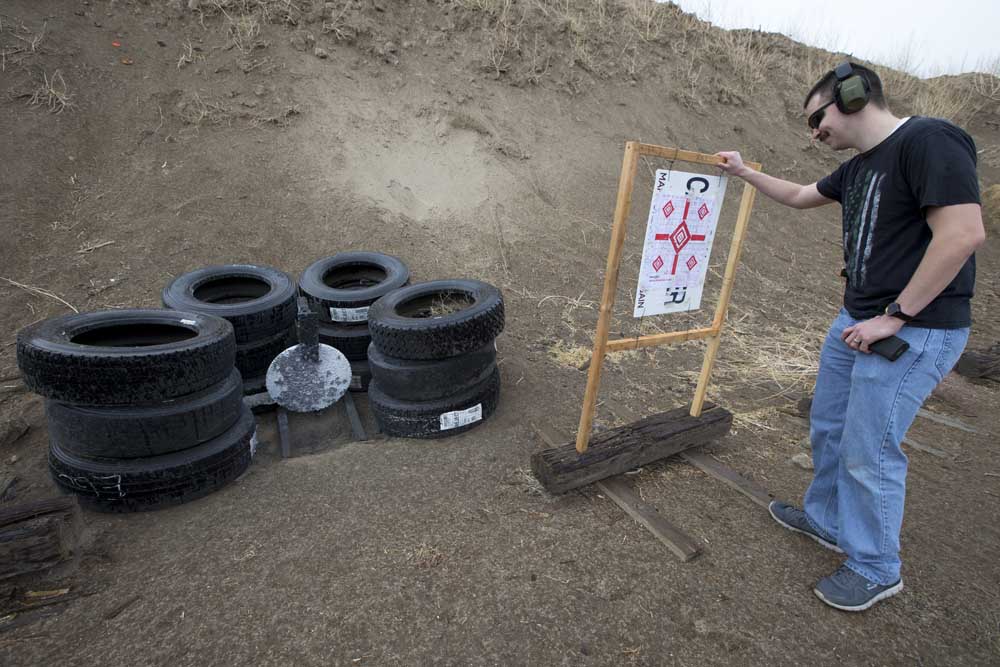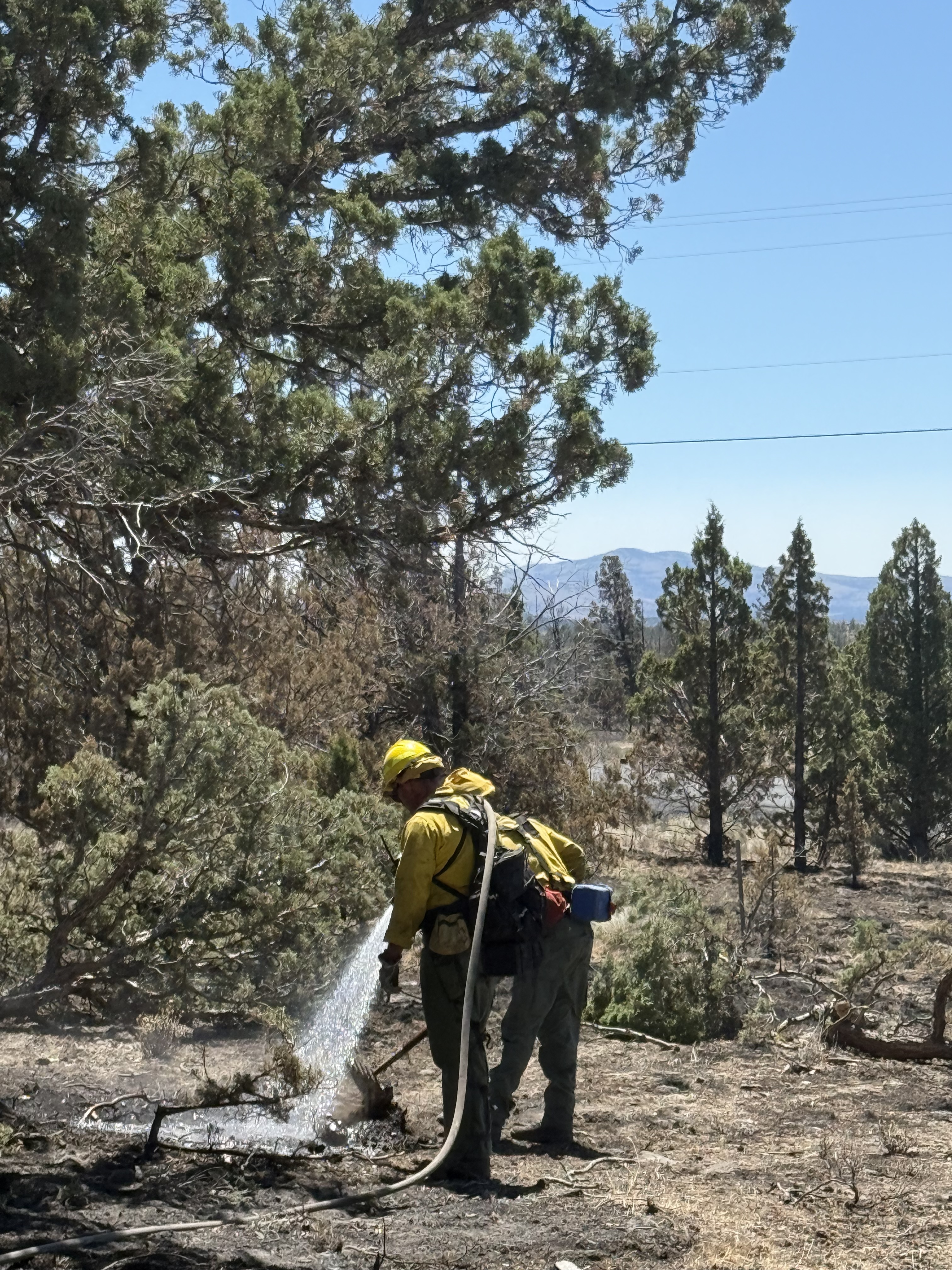Where shooters go to ‘plink’ in Central Oregon
Published 12:00 am Thursday, October 18, 2018

- William McAlister, of Redmond, checks his target while shooting his rifle at the High Desert Shooting Sports Complex.(Andy Tullis/Bulletin photo)
“Plinking.” It’s the marksmanship equivalent of shooting hoops or playing pool, either with friends or family or by yourself.
This time of year, hobbyist marksmen and women mix with hunters honing their aim in preparation for deer and elk hunting seasons. Where can people shoot their firearms?
Trending
Ideal public shooting locations are sprinkled throughout Central Oregon, where shooting is allowed on public land managed by the U.S. Forest Service and the Bureau of Land Management. There are also a variety of private, nonprofit shooting ranges offering controlled environments. That opportunity comes with a cost.
Finding the target
Several popular shooting locations are found south of Bend along China Hat Road, where Coyote and Cabin buttes provide natural backstops and are sites the Forest Service recommends for shooting enthusiasts.
About a half mile to the east in the Sundance subdivision, however, residents are concerned by what they say is an uptick in shooting in the area.
On a recent afternoon, Scott Robbins stood in his driveway hosing down the portable wall tent he uses while elk hunting. A gun owner and hunter, Robbins said he and neighbors have been alarmed by stray bullets that whistle overhead while they ride horses or hike along trails in the Deschutes National Forest land that lies between the subdivision and the buttes.
“In the last three years, I’ve given up shooting (at Cabin Butte) because I just don’t feel it’s safe,” said Robbins, adding that he never shot at Coyote Butte because it strikes him as too close to developments.
Trending
Kassidy Kern, a spokesperson for the Deschutes National Forest, said the agency is well aware of the user conflict along China Hat Road, yet it has no plans to restrict shooting or hunting in the area at this time.
“We just want everyone to make sure they have a backstop,” said Kern, adding that hunters should be mindful of other recreationists. The focus of Forest Service law enforcement officers and field rangers will remain on public education.
Shooters cannot fire within 150 yards of a residence, building, campsite, developed recreation site or occupied area, Kern said. It is also unlawful to shoot across a road, trail, body of water, in a cave or where a person or property may be exposed to injury or damage as a result of the shooting. Trees cannot be shot at.
Robbins and his neighbor Jim Moran, who is also a gun owner and hunter, encourage others to do as they do and relegate their marksmanship practice to Central Oregon’s nonprofit ranges.
“It’s just safer,” Moran said. “If you really want to shoot and you really want a safe place to be, those are the places to go.”
High Desert Shooting Sports Complex
One such place to shoot in a controlled environment is the High Desert Shooting Sports Complex, a nonprofit outdoors facility situated on 233 privately owned acres near Redmond. Also the home of the Redmond Rod and Gun Club, the site maintains a 100-yard rifle range with targets situated at 25, 50 and 100 yards and a 25-yard pistol range, featuring targets at three different distances.
Shotgun enthusiasts can walk through a five-stand, 50 clay pigeon course. Clay pigeons launch toward you, away and overhead — an arrangement that simulates birds in flight and rabbits on the go. There is also trap shooting, in which the shooter stands in a fixed location. Programs geared toward women include the bimonthly Ladies Night, which features a group pistol shoot led by a certified female instructor. There are also frequent hunter education seminars. Shooting and archery competitions occur in the warmer months.
Redmond resident Bill Layton, who is the rifle-pistol director of the Redmond Rod and Gun Club, said Central Oregon offers a lot of shooting options. And he’s not talking about sites on public land.
“I come to the range because we have range safety officers on duty,” said Layton, a former Marine who prefers to practice marksmanship in a controlled environment. “There’s no danger of someone shooting someone in the wrong place and the wrong time or in the wrong direction. … We cater to kids, families and ladies to provide them a safe place.”
Ranges like the High Desert Shooting Sports Complex have a smaller environmental footprint than popular shooting spots on public land, which Layton said can often resemble “trash heaps.” At the facility, the lead bullets are mined from backstops before being processed and resold to the shooters and hunters who refill their ammunition. Open to the public, the High Desert Shooting Sports Complex charges nonmembers $10 per visit.
Central Oregon Shooting Sports Association
Sharon Preston, the former president of the Central Oregon Shooting Sports Association, is also a proponent of gun enthusiasts recreating in controlled environments.
“We’ve already been having problems at Coyote Butte, and it’s only a matter of time before someone gets hit by a stray bullet out there,” Preston said. (In 2005, a Forest Service employee was shot in the thigh near the Woodside Ranch subdivision.) “That’s the reason why we want to use our gun ranges and not the BLM and national forest (lands), which is legal to do. But it’s a bigger issue than that.”
COSSA is a nonprofit club and is located on 600 acres off U.S. Highway 20 near Millican. The organization, which accommodates 13 shooting disciplines, offers many events to members and nonmembers alike, including shooting matches, monthly youth and women’s programs, and rifle scope sight-in clinics. The range features 18 shooting bays that are dedicated to pistols and rifles of wide-ranging calibers. There are also trap shooting options and an archery area. Riflers use one of two 1,000-foot ranges while snipers have access to a mile-long range.
Two complete “cowboy action towns,” which resemble Hollywood Western sets and feature moving targets, round out the offerings. (HDSSC has a cowboy action town, too.) Nonmembers are welcome at COSSA. After a free safety orientation meeting during the initial visit, nonmembers can buy a $5 pass to shoot all day. These fees pay for the insurance, infrastructure and supervision that ensure safer shooting at the private range, Preston said.
“It’s not a skate park — it’s a shooting park,” Preston said. “A lot of people want to be willy-nilly and open to the public, but we’ve got to back up. We’re taking the extra step to put these safety protocols in place. It’s a personal responsibility that we take very seriously. We all want to go home at the end of the day.”
At home on the range
Bill Littlefield, a board member and former president of the Oregon Hunters Association, spent some recent afternoons with his 16-year-old daughter at COSSA. During both visits, they had an entire section of the shooting park to themselves, which Littlefield appreciates from a safety and convenience standpoint. The Littlefields rarely target shoot on public land as they prepare for hunting seasons. He predicts that more and more target shooters will opt for gun ranges’ clean, controlled environments.
“I worry about disturbing others (on public land). The places that are close (to Bend) are often crowded, and people leave a lot of trash,” he said, adding that when he does shoot on public land he picks up his shell casings and other waste. “I worry some about the safety with others around in an uncontrolled area (because) not everyone takes safety as seriously as I think they should.”
— Reporter: 541-617-7816, pmadsen@bendbulletin.com








